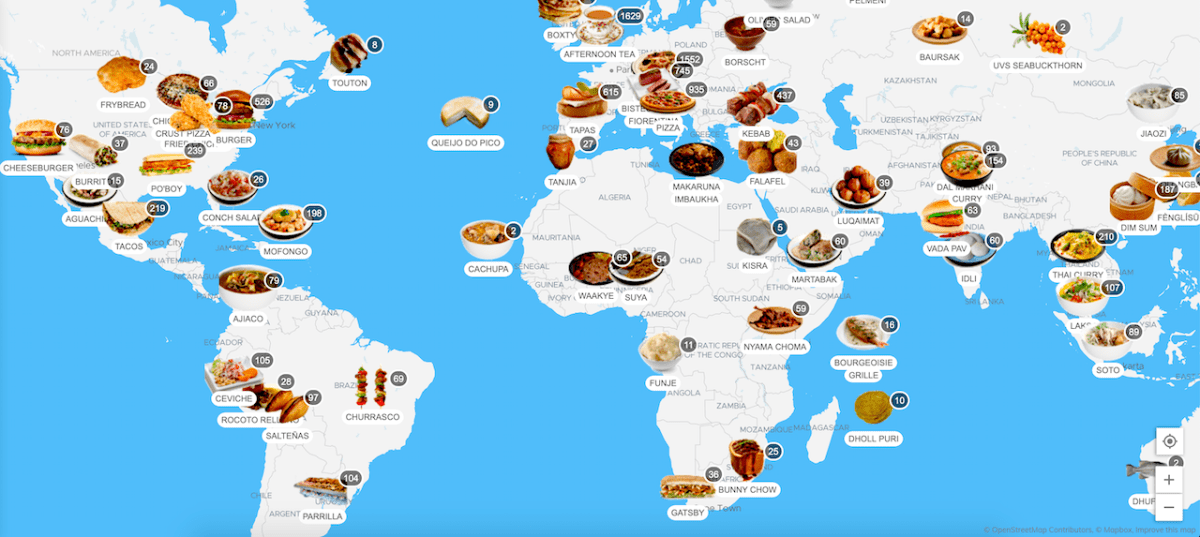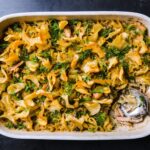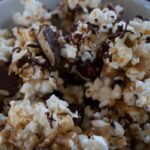Embark on a culinary journey around the globe with “Taste the World: Nut-Free Recipes from Global Cuisines”! This exciting exploration unveils a vibrant tapestry of flavors, textures, and aromas, all meticulously crafted to be completely nut-free. Discover how diverse cultures have created delicious dishes without relying on nuts, showcasing the incredible versatility and richness of global cuisine. Prepare to tantalize your taste buds and expand your culinary horizons with simple, yet incredibly flavorful recipes.
We delve into the heart of five distinct cuisines, highlighting their naturally nut-free treasures. Each recipe is thoughtfully designed for ease of preparation, using readily available ingredients and offering insightful substitutions for common allergens. Detailed step-by-step instructions, accompanied by vivid descriptions of the dishes’ visual appeal, will guide you through the cooking process, transforming your kitchen into a global culinary hub.
Nut-Free Ingredient Exploration and Substitution
Embarking on a global culinary adventure without nuts requires thoughtful ingredient substitutions. Many recipes rely on nuts for flavor, texture, and nutritional value, but delicious alternatives exist, preserving the essence of diverse cuisines while maintaining dietary restrictions. This section explores common nut-based ingredients and their suitable replacements, comparing their characteristics and nutritional profiles.
Many global cuisines utilize nuts in various forms – from whole nuts and nut butters to nut flours and nut oils. These ingredients provide unique textural and flavor contributions. However, for individuals with nut allergies or those following nut-free diets, finding appropriate substitutes is crucial. Careful consideration of texture and flavor is key to successfully replicating the original dish.
Common Nut-Based Ingredients and Their Nut-Free Alternatives
This section details specific examples of nut-based ingredients commonly used in global cooking and their suitable nut-free counterparts. The table below provides a comparison of nutritional values, offering a comprehensive guide for substitution.
| Ingredient | Nut-Free Alternative | Nutritional Value (Original) (per 100g) | Nutritional Value (Alternative) (per 100g) |
|---|---|---|---|
| Peanut Butter (1 tbsp ≈ 16g) | Sunflower Seed Butter (1 tbsp ≈ 16g) | Calories: 190, Fat: 16g, Protein: 7g | Calories: 180, Fat: 16g, Protein: 6g |
| Almond Flour (1 cup ≈ 125g) | Oat Flour (1 cup ≈ 125g) | Calories: 640, Fat: 50g, Protein: 20g | Calories: 400, Fat: 7g, Protein: 12g |
| Cashew Cream (1/4 cup ≈ 60g) | Tahini (1/4 cup ≈ 60g) | Calories: 290, Fat: 26g, Protein: 4g | Calories: 260, Fat: 25g, Protein: 8g |
| Macadamia Nut Oil (1 tbsp ≈ 15ml) | Avocado Oil (1 tbsp ≈ 15ml) | Calories: 120, Fat: 14g, Protein: 0g | Calories: 120, Fat: 14g, Protein: 0g |
Note: Nutritional values are approximate and can vary depending on the brand and specific ingredients. These values represent averages based on readily available data.
Texture and Flavor Profile Comparisons
The textural and flavor differences between nut-based ingredients and their nut-free alternatives are significant and require careful consideration during substitution. For instance, almond flour provides a finer texture and slightly sweet taste compared to the coarser texture and earthier flavor of oat flour. Similarly, the creamy texture of cashew cream contrasts with the more robust and slightly bitter taste of tahini. Substituting sunflower seed butter for peanut butter results in a similar creamy consistency but a slightly less intense and less salty flavor profile. The subtle nutty flavor of macadamia nut oil is well-replaced by the mild flavor of avocado oil, which also possesses a similar high smoke point. Understanding these differences is vital for successful recipe adaptation.
Visual Representation of Recipes and Ingredients

A captivating cookbook needs more than just delicious recipes; it requires a visual feast that entices the reader and inspires culinary creativity. High-quality photography and detailed descriptions of both raw ingredients and the finished dishes are crucial to achieving this. The following sections delve into the visual aspects of presenting nut-free global cuisine, emphasizing the importance of color, texture, and plating to create a truly appealing cookbook.
Recipe Visual Descriptions
Each recipe will be accompanied by a vibrant photograph showcasing the finished dish. Consider, for example, a vibrant Moroccan tagine. The photograph will highlight the rich, deep orange of the saffron-infused broth, contrasting beautifully with the emerald green of the preserved lemons and the deep red of the sun-dried tomatoes. The tender chunks of chicken or lamb will be visible, glistening with the sauce, while the fragrant herbs sprinkled on top add a textural and visual element. Similarly, a Japanese ramen bowl will be depicted with a steamy, rich broth, showcasing the contrasting textures of the noodles, soft-boiled egg, and various vegetables like vibrant green bok choy and bright orange carrots. The plating will emphasize the layering of ingredients, creating a visually appealing and appetizing presentation. The descriptive text accompanying the image will further enhance the visual experience, mentioning the glossy sheen of the sauce, the delicate curl of the noodles, and the vibrant hues of the vegetables. Descriptions will also detail the raw ingredients – the earthy tones of the carrots before cooking, the bright green of fresh herbs, the smooth texture of the tofu before it’s crisped.
Ingredient Visual Descriptions
The visual appeal extends beyond the finished dish to the ingredients themselves. Before cooking, the raw ingredients will be showcased in high-quality images that highlight their natural beauty and texture. For instance, a photograph of vibrant red bell peppers, glistening with moisture, will contrast with the smooth, creamy texture of coconut milk. The deep purple of eggplant, the bright green of spinach, and the earthy tones of root vegetables will be captured in detail, providing the reader with a sense of the freshness and quality of the ingredients. The text will describe these qualities, mentioning the smoothness of the coconut milk, the vibrant shine of the peppers, and the firm texture of the tofu before cooking. The visual contrast between raw and cooked ingredients will be a key element in demonstrating the transformation of food.
Visual Depiction of the Cooking Process: Coconut Curry with Chickpeas
Let’s visualize the cooking process of a Coconut Curry with Chickpeas.
- Step 1: Preparing the Vegetables: The image will show a vibrant array of chopped vegetables – onions glistening with a slight translucence, vibrant red bell peppers, and bright green chilies. The contrasting colors and textures are immediately apparent. The text will emphasize the freshness and crispness of the vegetables.
- Step 2: Sautéing the Aromatics: The image depicts the onions softening and turning translucent in a hot pan, their edges slightly browned, releasing their aromatic fragrance. The chilies will retain their vibrant color but appear slightly softened. The text will describe the change in texture and color.
- Step 3: Adding Spices and Coconut Milk: The image shows the addition of fragrant spices – turmeric, cumin, and coriander – creating a rich, golden-hued mixture. The creamy coconut milk is then poured in, creating a smooth, rich sauce. The text will describe the intoxicating aroma and the creamy consistency of the coconut milk.
- Step 4: Simmering with Chickpeas: The chickpeas are added to the simmering sauce, creating a visually appealing mixture of creamy sauce and hearty chickpeas. The image shows the chickpeas absorbing the rich sauce, their color deepening slightly. The text describes the aromatic steam rising from the pot and the rich, fragrant curry developing.
- Step 5: Final Dish: The final image shows the finished Coconut Curry, a creamy, golden-hued dish studded with vibrant vegetables and tender chickpeas. The photograph will highlight the texture and the rich color of the sauce, the contrast between the smooth sauce and the hearty chickpeas, and the vibrant color of the vegetables. The text will describe the irresistible aroma and the creamy, comforting texture of the curry.
From the vibrant spices of Moroccan tagines to the comforting warmth of Italian pasta dishes, “Taste the World: Nut-Free Recipes from Global Cuisines” proves that delicious, nut-free cooking knows no bounds. This collection is more than just a cookbook; it’s an invitation to explore the world’s diverse culinary heritage while accommodating dietary restrictions. The journey through these recipes will not only delight your palate but also deepen your appreciation for the global tapestry of flavors, proving that delicious and inclusive cooking can go hand in hand.
Questions and Answers
Can I adjust the spice levels in the recipes?
Absolutely! Spice levels are easily adaptable to personal preference. Feel free to adjust the amount of chili powder, pepper, or other spices according to your taste.
Are these recipes suitable for beginners?
Yes, the recipes are designed with simplicity in mind, making them accessible to cooks of all skill levels. Clear, step-by-step instructions ensure a smooth cooking experience.
Where can I find substitutions for other allergens besides nuts?
While the focus is on nut-free cooking, many recipes can be further adapted to exclude other allergens. Consult reputable allergy resources for guidance on specific substitutions.
How far in advance can I prepare these dishes?
That depends on the specific recipe. Some dishes can be prepped ahead and stored in the refrigerator, while others are best enjoyed fresh. Each recipe will provide specific storage instructions.


